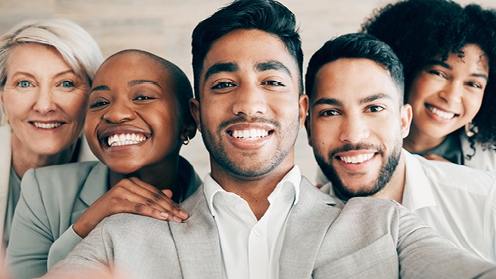
8 May 2024
Communicate your way toward better client relationships
We know that the in-house lawyer’s role is pivotal. But it can be tough to get other people to comprehend our (incredible) importance.
We’re here to help organisations navigate legal issues and achieve their goals. However, misconceptions and communication barriers can overshadow our value. To clarify our roles, value and responsibilities, we need to communicate well and often.
Here are five challenges that undermine the client-legal relationship and suggestions on how to bridge the gap.
CHALLENGE NO.1
Clients don’t understand what lawyers actually do
We often hear that people love their legal team. They’re aware the team works hard. But they ‘don’t know what they do all day’.
Solutions:
Demystify Your Role
Define and explain the legal team’s core functions. Share updates on challenges faced, how they can be overcome and how Legal’s work contributed to great business outcomes.
Foster Open Dialogue
Encourage clients to share their needs and concerns. Regular check-ins and feedback sessions can help you understand each other’s position. Regular one-on-one sessions with key client leads also provide a low-pressure forum for frank discussions.
CHALLENGE NO.2
Being perceived as ‘blockers’ rather than enablers
People unfairly apply labels to legal, like ‘the department of no’. Some in-house lawyers can worsen this situation by being too risk-averse, but most of us are simply protecting the client.
Solutions:
Be proactive; not reactive
Tell your clients about legal issues before they become problems. Explain the risk profile of one option vs another rather than saying is ‘approved’ or ‘not approved’. Great in-house lawyers see the icebergs and help their teammates safely navigate around them. This shifts the perception from ‘blocker’ to ‘strategic advisor.’
Collaborative problem solving
Reinforce the idea that Legal and colleagues from other teams are on the same side. Consider joining client team meetings to hear what’s on their minds and discuss how Legal can help.
CHALLENGE NO.3
Insufficient or late input from clients to do legal work
Everyone becomes frustrated when there are perceived or actual delays in the progress of legal work.
Solution
Help me help you**
It’s our role to manage client expectations, and clear communication from the outset is key. Let them know what you need to start or continue work and how delays will impact the deadline. They might never understand Legal’s role or your capacity, but by communicating clearly on expectations and timeframes, everyone can succeed.
CHALLENGE NO.4
Role blur
Legal can be blamed for issues that aren’t our responsibility. It happens when non-lawyers dump their work on Legal because they know we’ll be attentive, smart about it, and get the job done.
Solution
Role clarity
Take the time to explain the key responsibilities of Legal vs. clients. Emphasise how you help the organisation succeed and why it’s important for you to focus your energy on your core work.
Have regular chats about how to improve problematic processes or tips on working with the legal department.
CHALLENGE NO.5
Speaking different languages
Jargon can be an easy shorthand for us, but it creates barriers between the legal team and clients.
Solution
Find common ground
Translate legal terms into plain language. Aim for a Flesch-Kincaid score of around 7th grade or lower. Avoid acronyms or management speak. Instead, use analogies and examples, relating them to your clients’ experiences. This makes complex legal concepts easier to understand.
Great in-house lawyers don’t use legalese. They use plain language that their colleagues can understand. They don’t hide behind obscure concepts and Latin words. Don’t think about it as dumbing down; you’re opening up and bringing everyone along on the ride.
CHALLENGE NO.6
Communication channel confusion
Sure, we sometimes need to manage legal privilege, but we often fail to use the main communication channels used by the rest of the organisation. This means that clients aren’t aware of our progress or how Legal is helping everyone to succeed.
Solutions:
Meet them where they are
Understand your client’s individual communication styles and preferences. Most like a succinct verbal update on important work. Some may prefer written reports. Many love dashboards. Others might like concise bullet points or visuals.
It’s also important to meet your clients where they are.
Multi-channel chats
Use all the communication channels others in your organisation use: newsletters, intranet articles, town hall updates and informal (walking/coffee) chats to share insights.
In conclusion
Good communication is key to any successful relationship. The above tips can help you break down barriers and build trust, which will benefit you, your team and the whole organisation.
Remember, the goal is not just to be understood but to ensure that your clients feel heard, supported and valued.
As the saying goes – they won’t remember what you said but how you made them feel. It’s great to be smart and in the right, but no one likes working with a jerk.
Like to know more? Read these two articles for starters.
Harvard Law – Smart Collaboration for In-House Lawyers
Best communication practices in the workplace
** Bonus points for people who still appreciate Jerry Maguire quotes


